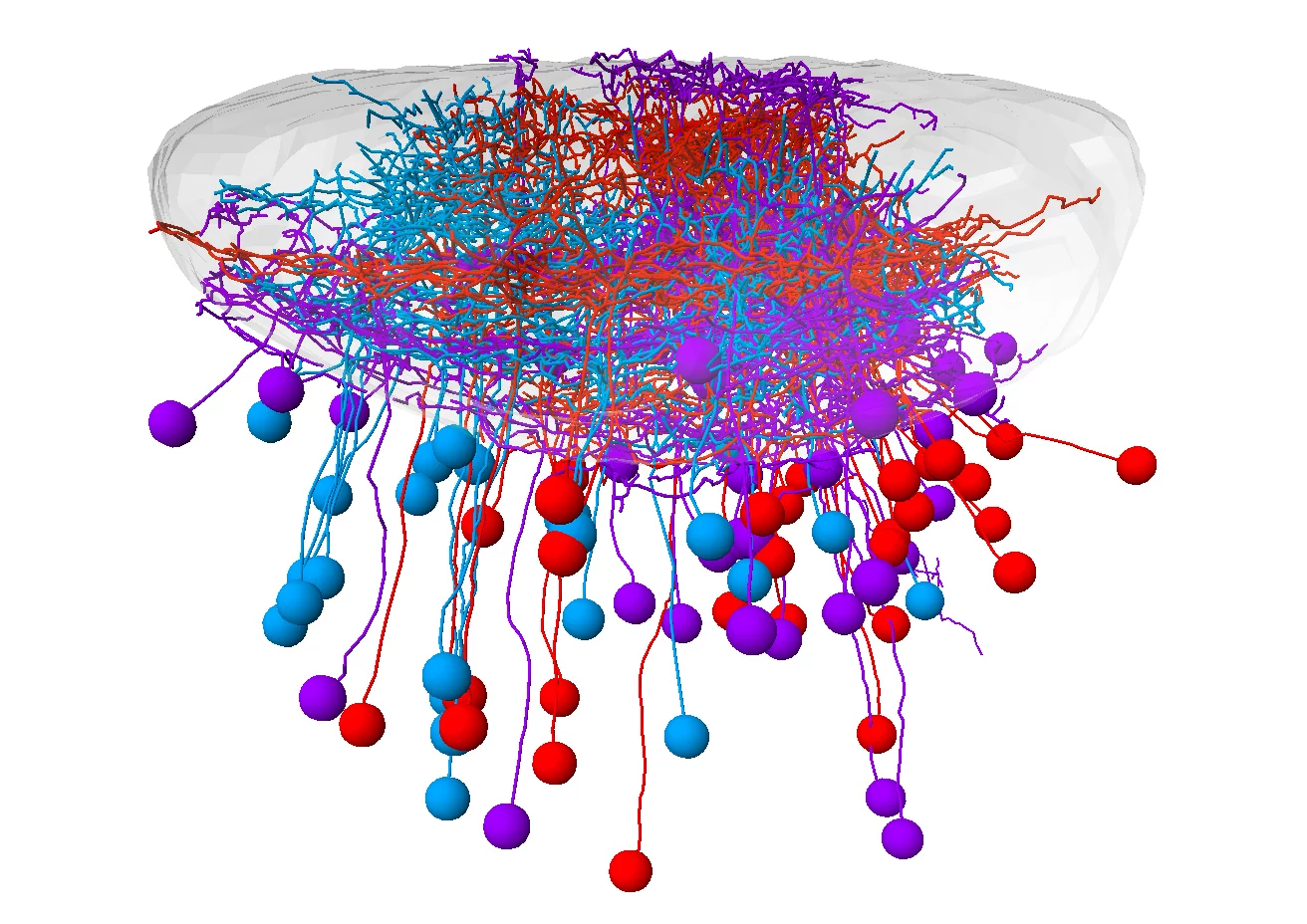The right cells in the right spot

Spotting, pursuing and catching prey – for many animals this is an essential task for survival. Scientists at the Max Planck Institute of Neurobiology now show in zebrafish that the localization of neurons in the midbrain is adapted to a successful hunting sequence.
Far away, in the periphery of its visual field, a tiny zebrafish larva detects a small dot moving sideways. Is it prey or is it a threat, for instance, a distant predator sneaking up on it? Within the shortest possible time, the fish decides that it must be potential prey. The larva turns toward the object, approaches it, until it is right in front, and snaps shut – one of its daily hunting routines is successfully finished.
What might sound straightforward, is actually a highly complex process. Many different visual stimuli are detected simultaneously, transferred from the eye to the brain, and further processed. Interestingly, the stimuli don’t reach the brain at random locations: every position on the retina is transmitted to a very specific location in the tectum of the midbrain, the processing hub for visual stimuli. However, apart from that, there is not much knowledge of how the neurons are wired and organized, or which signals they specifically react to. Dominique Förster and a team from Herwig Baier’s laboratory analyzed how retinal ganglion cells transfer visual information from the eye to the tectum and how this input is further processed.
